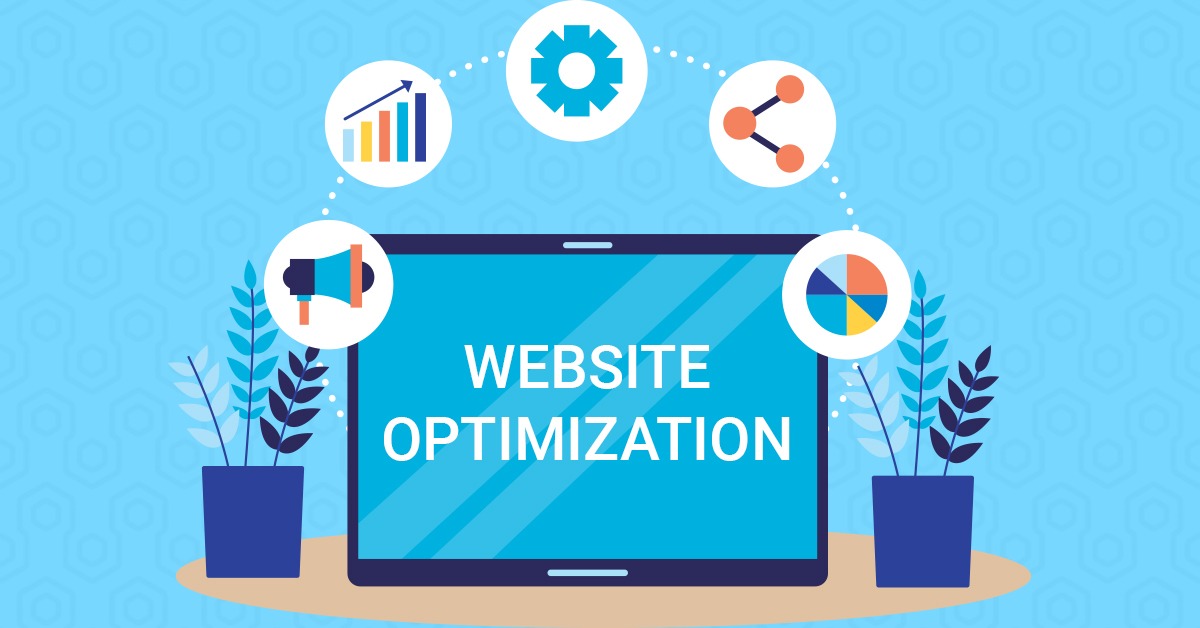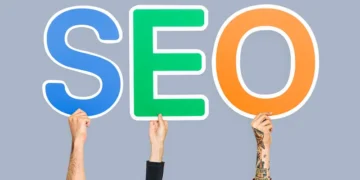Strategies for increasing online visibility encompass various techniques like , content marketing, social media engagement, and influencer collaborations. Dive into this comprehensive guide to discover how businesses can enhance their online presence and reach a wider audience effectively.
Online visibility is crucial for businesses in today’s digital age as it directly impacts their ability to reach and engage with potential customers. With the majority of consumers turning to the internet to research products and services before making a purchase, having a strong online presence is essential for success.
Increased online visibility can significantly impact sales and brand recognition in the following ways:
Increased Sales and Revenue
- By being easily found online, businesses can attract more traffic to their website, leading to higher conversion rates and ultimately increased sales.
- Higher visibility can also help businesses stand out from competitors and capture a larger share of the market.
Enhanced Brand Recognition
- When a business is easily found online, it increases brand visibility and awareness among consumers.
- Consistent online presence across different platforms helps in building brand credibility and trust with potential customers.
Benefits of Being Easily Found Online
- Increased online visibility allows businesses to reach a wider audience, including potential customers who may not have been aware of their products or services otherwise.
- Being easily found online also improves customer engagement and interaction, leading to stronger relationships with customers and increased loyalty.
Website Optimization Strategies

Optimizing a website is crucial for increasing online visibility and attracting more organic traffic. One of the key components of website optimization is Search Engine Optimization (), which plays a significant role in improving search engine rankings and driving relevant traffic to the site.
Importance
is essential for boosting online visibility as it helps search engines better understand the content of a website, making it easier for users to find it when they search for relevant s. By implementing best practices, websites can rank higher in search engine results pages (SERPs) and attract more organic traffic.
This practice has become a standard way for programmers to test their code and ensure that everything is functioning correctly.
Optimizing Website Content
Optimizing website content involves creating high-quality, relevant, and engaging content that is optimized for specific s. By incorporating relevant s naturally throughout the content, websites can improve their visibility in search results and attract a targeted audience.
Optimizing Meta Tags and Images
Meta tags, including title tags and meta descriptions, play a crucial role in by providing search engines with information about the content of a web page. Optimizing meta tags with relevant s and compelling descriptions can improve click-through rates and visibility in search results. Similarly, optimizing images with descriptive alt text and appropriate filenames can enhance the overall of a website.
Significance of Mobile Optimization
With the increasing use of mobile devices, optimizing websites for mobile responsiveness is essential for better visibility across various devices. Websites that are not mobile-friendly may experience lower rankings in mobile search results, leading to a loss of potential traffic and visibility. Therefore, implementing mobile optimization strategies, such as responsive design and fast loading times, is crucial for improving online visibility.
Content Marketing

Content marketing plays a crucial role in boosting online visibility by creating and distributing valuable, relevant, and consistent content to attract and engage a target audience. High-quality content can help websites rank higher in search engine results, increase website traffic, and improve brand awareness.
Role of High-Quality Content
Creating high-quality, relevant content is essential for attracting and engaging audiences. Quality content helps build credibility and trust with users, encouraging them to spend more time on the website and increasing the likelihood of conversion. By providing valuable information, answering questions, and addressing pain points, high-quality content can establish a website as a go-to resource in its industry.
- Quality content improves search engine optimization () by incorporating relevant s and providing valuable information that users are searching for.
- Engaging content encourages social sharing, increasing the reach and visibility of the website across different platforms.
- High-quality content helps establish thought leadership and expertise in a particular niche, attracting a loyal audience of followers.
Benefits of Various Content Formats
Utilizing different content formats such as blogs, videos, and infographics can further enhance online visibility and engage a wider audience.
- Blogs: Regularly updating a blog with informative and engaging posts can improve , drive traffic to the website, and position the brand as an authority in the industry.
- Videos: Videos have become increasingly popular and can help increase user engagement, dwell time on the website, and social shares. They are also favored by search engines, contributing to better visibility.
- Infographics: Visual content like infographics can convey complex information in a visually appealing manner, making it easier for users to digest and share. They are highly shareable and can attract backlinks for benefits.
Social Media Engagement

Active participation on social media platforms plays a crucial role in enhancing online visibility for businesses. By consistently posting, engaging with followers, and sharing valuable content, companies can increase their reach and attract a larger audience to their brand.
Importance of Consistent Posting
- Regular posting on social media helps to keep your brand at the top of users’ feeds, increasing visibility.
- Consistency in posting also signals to algorithms that your content is relevant and active, boosting your chances of being seen by a wider audience.
- Posting at strategic times when your target audience is most active can further enhance visibility and engagement.
Engaging with Followers
- Responding to comments, messages, and mentions shows that your brand is attentive and cares about its audience, fostering a sense of community.
- Engaging with followers can lead to increased shares, likes, and comments, which in turn can amplify your reach on social media platforms.
- By building relationships with followers, you create brand advocates who are more likely to share your content with their networks, expanding your visibility organically.
Sharing Valuable Content
- Providing valuable and relevant content to your audience positions your brand as a thought leader in your industry, increasing trust and credibility.
- Sharing a mix of promotional, educational, entertaining, and user-generated content can help maintain audience interest and engagement.
- Quality content is more likely to be shared by users, extending your reach beyond your immediate followers and increasing visibility on social media platforms.
Social Media Algorithms Impact
- Social media algorithms determine what content users see on their feeds based on factors like engagement, relevance, and timeliness.
- Understanding how algorithms work can help businesses tailor their content strategy to increase visibility and reach on social media platforms.
- Factors like likes, comments, shares, and click-through rates influence how algorithms prioritize and distribute content, affecting visibility for brands.
Paid Advertising Strategies
Paid advertising plays a crucial role in increasing online visibility by allowing businesses to reach a wider audience and target specific demographics. In this section, we will explore the different types of paid advertising strategies and provide tips for optimizing ad campaigns to effectively reach the target audience.
PPC, Display Ads, and Social Media Ads
Paid advertising can take various forms, including Pay-Per-Click (PPC), display ads, and social media ads. Each type serves a different purpose and has its own set of advantages and disadvantages.
- PPC: PPC ads are text-based ads that appear on search engine results pages when users search for specific s. Advertisers pay a fee each time their ad is clicked. This type of advertising is highly targeted and allows for precise control over ad spend.
- Display Ads: Display ads are visual ads that appear on websites, apps, and social media platforms. They can be in the form of banners, images, or videos. Display ads are effective for brand awareness and retargeting campaigns.
- Social Media Ads: Social media ads are ads that appear on social media platforms such as Facebook, Instagram, Twitter, and LinkedIn. These ads can be highly targeted based on demographics, interests, and behaviors of users. Social media ads are effective for building brand awareness, driving website traffic, and generating leads.
Optimizing Ad Campaigns
To optimize ad campaigns and reach the target audience effectively, consider the following tips:
- Define Your Audience: Clearly define your target audience based on demographics, interests, and behaviors to ensure your ads reach the right people.
- Use Compelling Ad Copy: Create engaging ad copy that highlights the benefits of your products or services and entices users to click on your ads.
- Set Realistic Goals: Establish clear goals for your ad campaigns, whether it’s driving website traffic, increasing sales, or growing your email list.
- Monitor and Adjust: Regularly monitor the performance of your ad campaigns and make adjustments based on the data. Test different ad creatives, targeting options, and ad placements to optimize your campaigns.
- Track Conversions: Set up conversion tracking to measure the effectiveness of your ad campaigns. Track key metrics such as click-through rates, conversion rates, and return on ad spend (ROAS) to evaluate performance.
Influencer Collaborations
Partnering with influencers can significantly boost online visibility for a business or brand. Influencers have a loyal following on social media platforms, and their endorsements can help reach a wider audience and increase brand awareness. By collaborating with influencers, businesses can tap into their established communities and leverage their credibility to gain trust and recognition.
Benefits of Influencer Marketing
- Increased Reach: Influencers have a large and engaged audience, allowing businesses to extend their reach to potential customers who may not have been reached through traditional marketing channels.
- Authenticity: Influencers are seen as trusted sources by their followers, and their recommendations come across as genuine and authentic, leading to higher engagement and conversion rates.
- Targeted Approach: Influencers often specialize in specific niches or industries, making it easier for businesses to target their desired audience with relevant content and messaging.
- Content Creation: Collaborating with influencers also means access to high-quality content that can be repurposed across various marketing channels, saving time and resources.
Examples of Successful Influencer Collaborations
1. Daniel Wellington x Influencers: The watch brand Daniel Wellington saw immense success by partnering with fashion and lifestyle influencers to showcase their products. This led to a significant increase in brand visibility and sales.
2. Gymshark x Fitness Influencers: Gymshark, a fitness apparel brand, collaborated with popular fitness influencers to promote their products and share workout routines. This collaboration helped Gymshark reach a wider audience and establish credibility in the fitness community.












